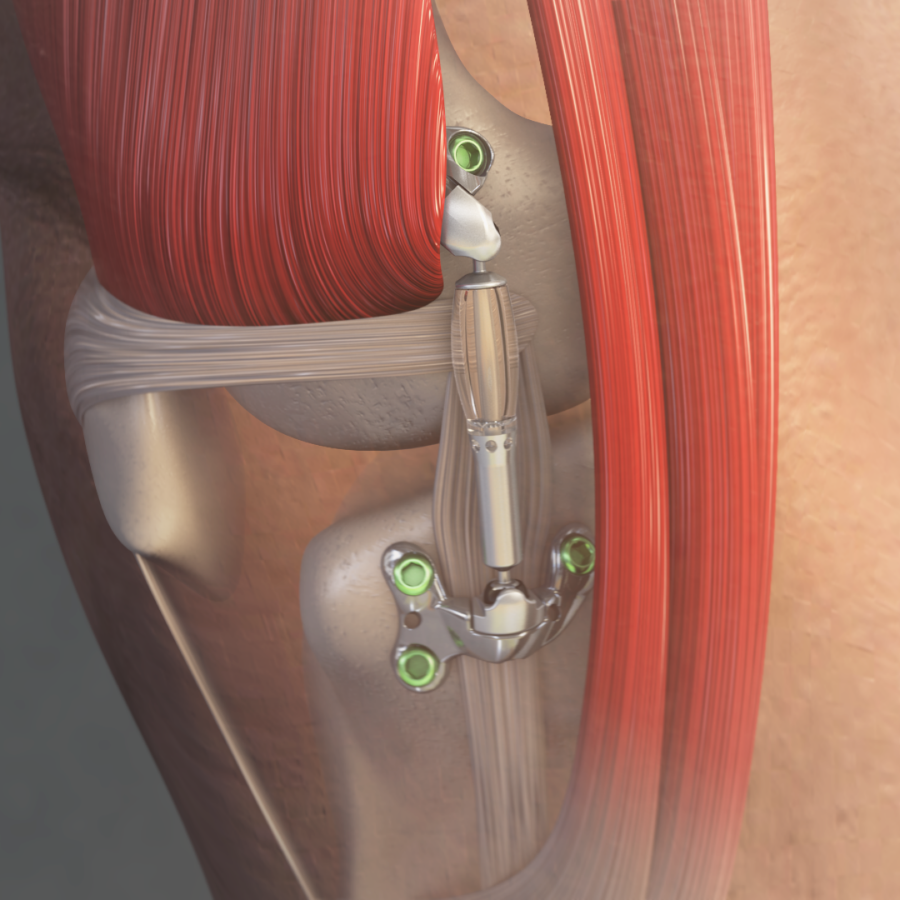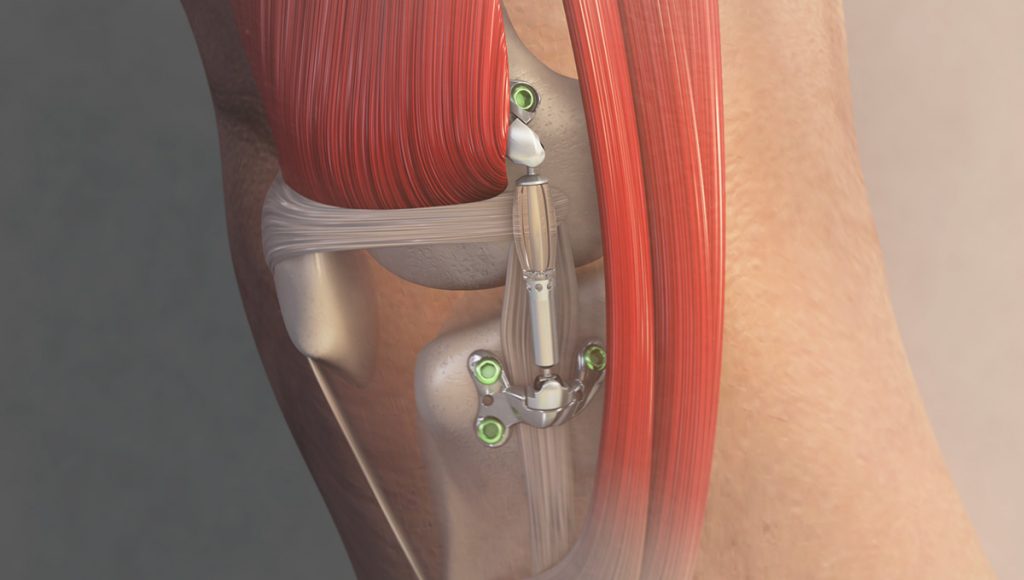
Clinical Study Stats
Most patients who received the MISHA Knee System experienced early and substantial relief.
Pain levels were cut in half as early as three months after ISA surgery compared to the pain they had before ISA surgery.
Patients reported having one-quarter of the knee pain at two years compared to the pain they had before ISA surgery.
1. Diduch DR, Crawford DC, Ranawat AS, Victor J, Flanigan DC. Implantable Shock Absorber Provides Superior Pain Relief and Functional Improvement Compared With High Tibial Osteotomy in Patients with Mild-to-Moderate Medial Knee Osteoarthritis: A 2-Year Report. CARTILAGE. 2023;0(0). doi:10.1177/19476035231157335.


I am so incredibly grateful for this device. It really did improve my life.
MIRANDA D., Previous ISA CLINICAL STUDY PARTICIPANTFive years after surgery (age 22 at time of surgery)
A REVOLUTIONARY TREATMENT
A mechanical solution for a mechanical problem.
Knee OA is caused by a mechanical problem: too much weight on the joint. The MISHA Knee System offers an elegant mechanical solution to this problem: unload the joint.

Standardized procedure
Since 2008, patients have been treated with implantable shock absorbers (ISAs). The procedure to implant the MISHA Knee System is repeatable and uses techniques familiar to orthopedic surgeons.
Before being able to perform the MISHA Procedure, your surgeon received detailed instructions on how the MISHA Knee System works and how to select patients indicated for treatment. All surgeons are required to complete specific training on how to implant the MISHA Knee System as part of a complete educational program.

No activity restrictions
After surgery, many patients can return to their favorite activities, including a range of athletic activities and routine daily activities. Your surgeon will direct your physical recovery program to help you regain strength and flexibility. Each person has different needs, so be sure to talk with your surgeon to set a schedule for beginning, or returning to, physical activity.


8-10 weeks [after surgery] I was climbing mountains in Scotland.
Karla H., PREVIOUS ISA Clinical Study ParticipantFive years after surgery (age 58 at time of surgery)
PROCEDURE DETAILS

An orthopedic surgeon will implant your MISHA Knee System, often on an outpatient basis, meaning that you will probably go home the same day as surgery.
The MISHA Knee System is placed alongside the inner half of your knee, with your skin and soft tissue covering it. This means that if you try to feel the device with your fingers, you might be able to feel it. Your natural knee remains fully intact since this procedure does not require any bone to be cut or cartilage to be removed.

After surgery, it is normal to experience temporary discomfort and swelling around the knee and lower leg. You will receive instructions on how best to take care of your incision as it heals and you may be offered crutches to support your movement during the early stages of recovery. The area around the MISHA Knee System is generally not painful, but direct impact to the area may feel like getting hit on the funny bone.
NOTE: All surgeries carry some risk, such as reactions to anesthesia or possible infection. In the uncommon event that you get an infection related to your device, it would likely need to be removed.
What to Expect On the Day of Surgery
The MISHA procedure is minimally invasive and leaves the cartilage joint surfaces intact. As a result, in a clinical study, many patients were able to go home the same day as surgery and reported short times until they resumed full weight-bearing.
91% of U.S. patients went home from the hospital the same day as surgery.
Patients resumed full weight-bearing without crutches at an average 13.4 days.


